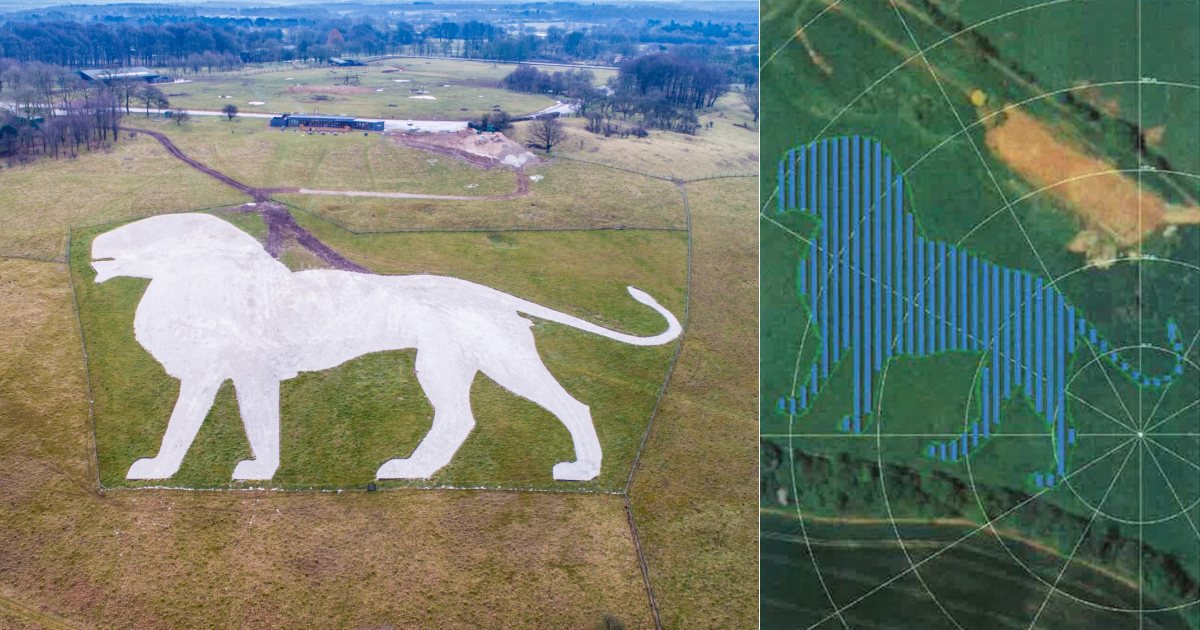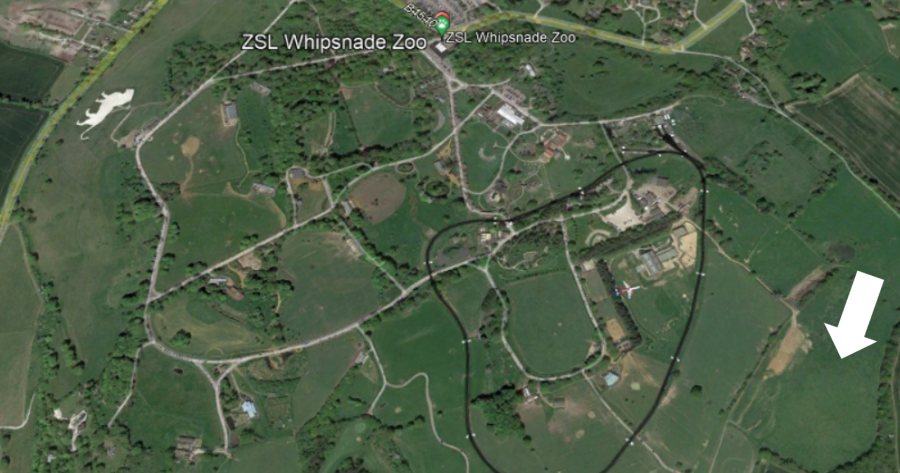
The UK’s largest zoo is embarking on a solar power project with a difference; emulating its iconic chalk white lion landmark.
ZSL Whipsnade Zoo is located at Whipsnade, near Dunstable in Bedfordshire, England. It’s one of two zoos owned by the Zoological Society of London, which is dedicated to the conservation of animals and their habitats.
Covering 600 acres, ZSL Whipsnade Zoo is one of Europe’s largest wildlife conservation parks and is home to thousands of animals. It’s also home to the Whipsnade White Lion (pictured above left), a 147-metre-long chalk image that has overlooked the Dunstable Downs since 1933.
The lion was created by scraping back around 2 acres of ground to reveal the chalk beneath. It disappeared for a while during WWII as it was covered to prevent enemy aircraft from using it as a navigation point. In the decades to follow the lion became a bit grotty, but restoration work in 2018 involving 800 tonnes of chalk trucked in restored the lion to its former brightness.
Whipsnade Zoo announced yesterday that plans are being drawn up to create a solar panel array in the shape of the lion at the opposite end of the zoo. According to the organisation, the solar power plant will “produce 1MW of energy”, but it probably meant 1MW of power (learn about the difference between power and energy). It’s expected the project will supply equivalent to a third of the electricity the zoo requires to operate.
Judging by the image above, it looks like the solar lion will be located in the general area indicated by the arrow in the image below. You can see the existing chalk lion top-left:
“A Beacon Of Light”
The project is part of the zoo’s efforts to achieve net zero carbon emissions by 2035.
“We must invest our time, energy and resources into reducing our carbon emissions to be as low as they can be, as quickly as we can, with innovations like the Solar Lion,” said Chief Operating Officer Owen Craft. “I hope that our Whipsnade Solar Lion, when she is in place, will be a beacon of light reminding people that change is not only necessary, but possible.”
This doesn’t appear to be the first project involving solar energy for Whipsnade. The web site makes reference to a renewable energy project heating the indoor pools for its one-horned rhinos using “solar panels” and an air heat exchange system – but it looks like the panels are actually an evacuated tube solar hot water setup.
Mr. Craft also has a message for world leaders in the leadup to Glasgow climate talks in November.
“As a global conservation charity, we know only too well the devastating effect climate change is having on the world’s wildlife, as well as on the survival of our own species,” he said. ” As we approach the United Nations climate change conference COP26 in Glasgow, we’re calling on world leaders to put nature at the heart of global decision making, and we’re committed to that ourselves.”
Zoos around the world are switching on to the benefits of commercial solar power, not just to play their part in reducing emissions, but to also slash energy-related operating costs. Here in Australia, among those with solar panels is Australia Zoo’s particularly impressive installation, a 638kW system on the Crocoseum roof installed by Gem Energy.


 RSS - Posts
RSS - Posts



Speak Your Mind